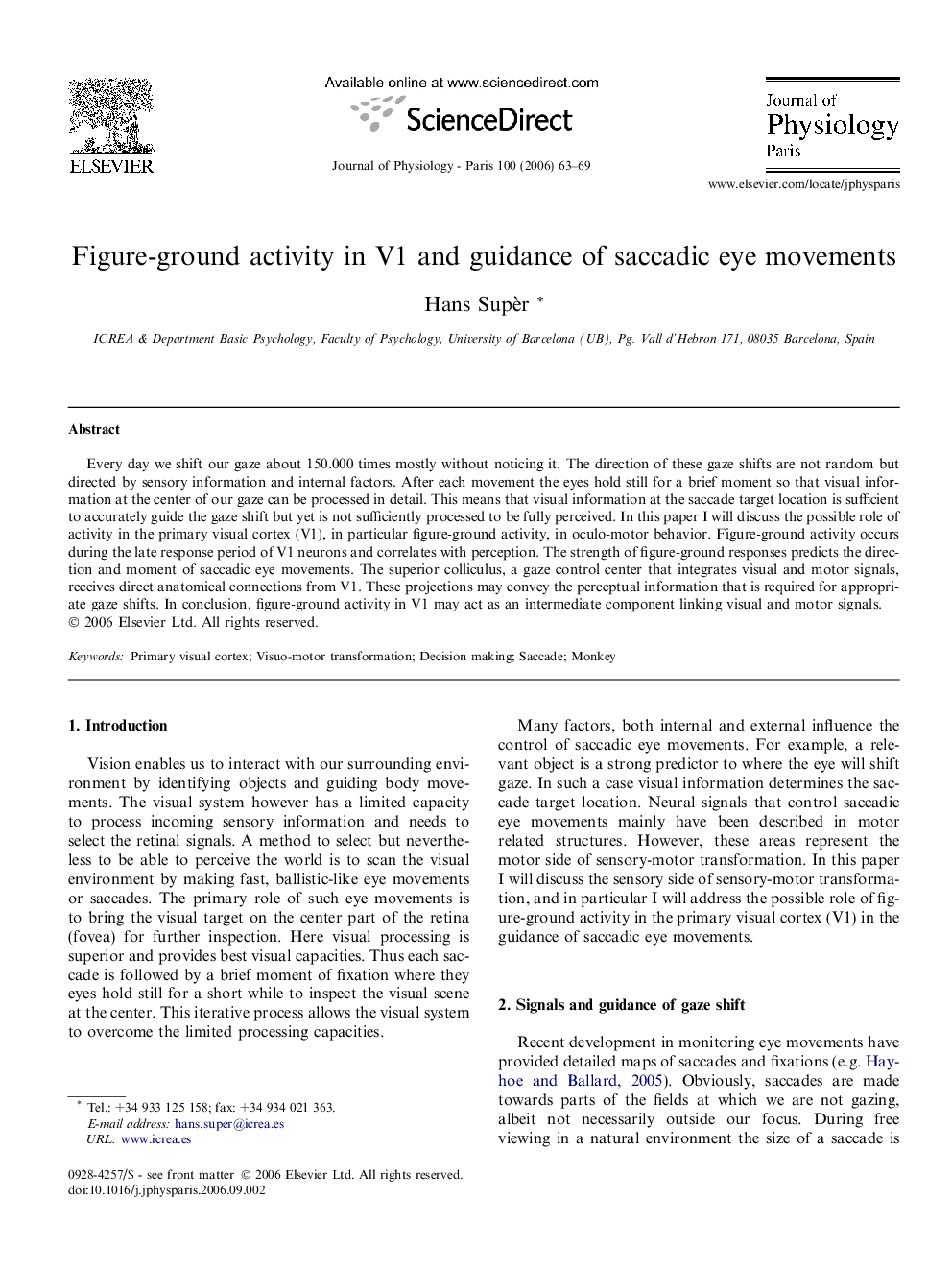| Article ID | Journal | Published Year | Pages | File Type |
|---|---|---|---|---|
| 2842433 | Journal of Physiology-Paris | 2006 | 7 Pages |
Every day we shift our gaze about 150.000 times mostly without noticing it. The direction of these gaze shifts are not random but directed by sensory information and internal factors. After each movement the eyes hold still for a brief moment so that visual information at the center of our gaze can be processed in detail. This means that visual information at the saccade target location is sufficient to accurately guide the gaze shift but yet is not sufficiently processed to be fully perceived. In this paper I will discuss the possible role of activity in the primary visual cortex (V1), in particular figure-ground activity, in oculo-motor behavior. Figure-ground activity occurs during the late response period of V1 neurons and correlates with perception. The strength of figure-ground responses predicts the direction and moment of saccadic eye movements. The superior colliculus, a gaze control center that integrates visual and motor signals, receives direct anatomical connections from V1. These projections may convey the perceptual information that is required for appropriate gaze shifts. In conclusion, figure-ground activity in V1 may act as an intermediate component linking visual and motor signals.
